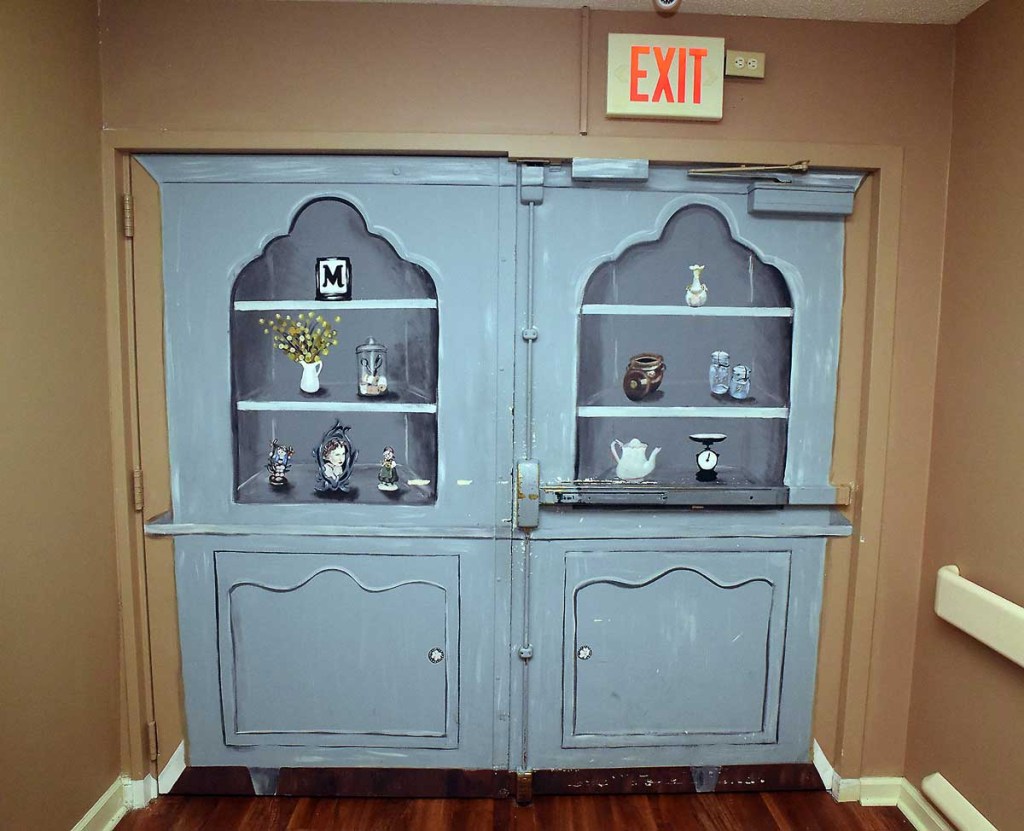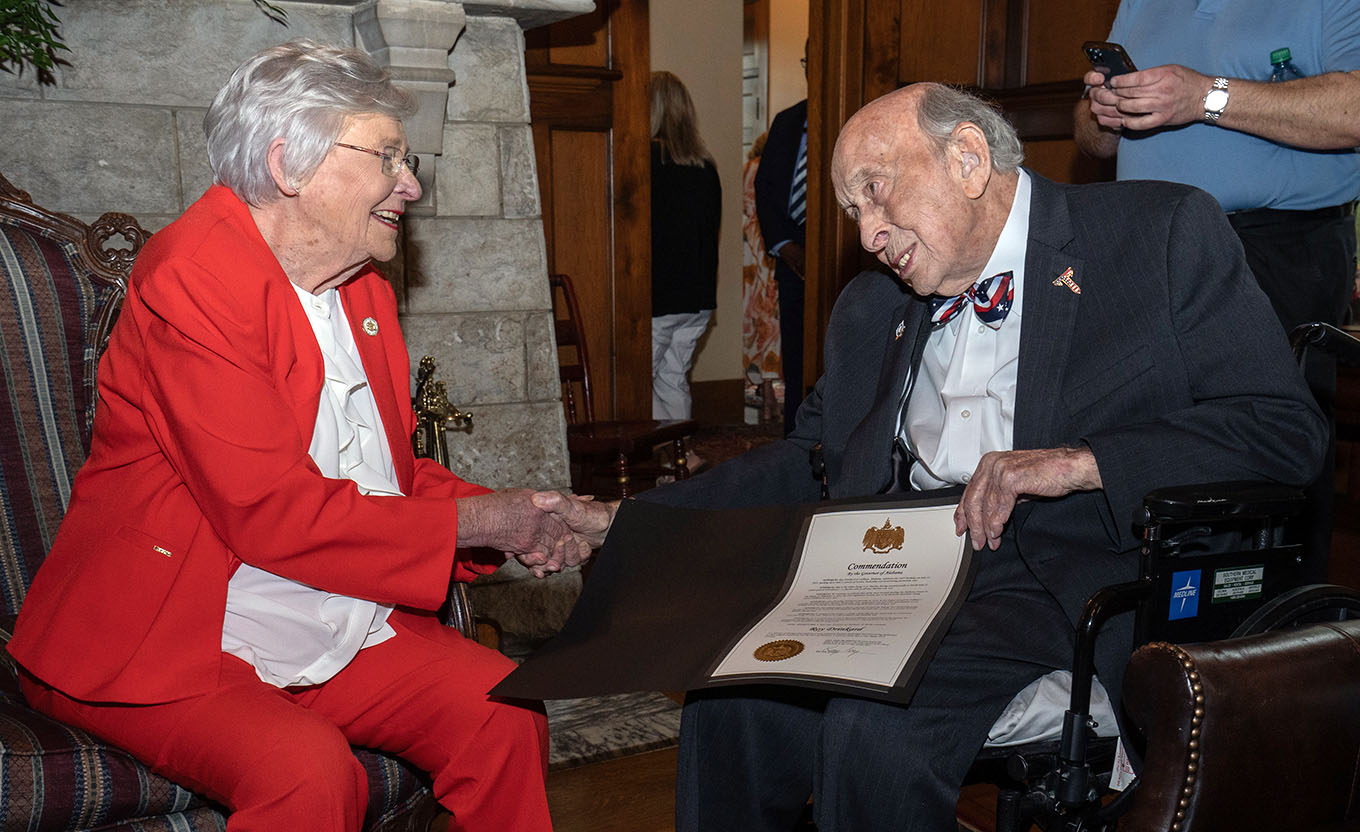Look a little closer
Published 12:48 pm Wednesday, December 25, 2019

- Hanceville Nursing and Rehab Center staff say that patients with dementia would try to leave when they saw an exit sign. Those patients who usually banged on the doors will now walk up to it, then walk away, not even realizing they were looking at the door.
Rows of tomato cans, pickled vegetables and canisters line one of the back walls of Hanceville Nursing and Rehab Center. Perched above the cans, nestled between an ornate tea kettle and a porcelain swan, a doll dangles her feet over the edge. The scene is something reminiscent of a mid-century kitchen where a hot supper is set on the table and a black and white television might be buzzing in the background. One most of the nursing home residents might remember from a life lived long ago.
This scene was created with a few paint buckets, some brushes and — most importantly — the creativity and ingenuity of local artist Bethany Kerr. Collaborating with the nursing home to incorporate a colorful patch of familiarity where stress and anxiety might manifest, Kerr took a persistent problem and put a beautiful solution in its place.
Trending
“Nursing homes house many people with dementia who many times have anxiety over seeing the exit doors, which leads them to try to leave,” says Kerr, who’s murals pepper the city of Cullman (you’ve probably driven by her “Welcome to Cullman” mural located on the side of Newman’s Cleaners building). “They will bang on the doors or assault the staff who care for them, thinking they need to leave the facility.”
By painting a familiar scene like a kitchen cupboard or pantry on top of the exit door, Kerr created a world within a world that looks more familiar to residents and patients — a world they can peacefully live in. The murals, as a result, serve a dual purpose. They add a pop of color to the nursing home’s otherwise gray walls and they also serve as discreet, yet beautiful, piece of camouflage.
Living in color
On a dreary Friday morning, while a steady sheet of rain coats residents’ windows, Kerr’s murals almost serve as a beautiful buffer to the outside world. They create a safe place, she says, where residents and staff can live and work together.
“The nursing home staff reported that the patients who usually banged on the doors would walk up to it, then walk away, not even realizing they were looking at the door,” Kerr says. “Also, having vintage items in the murals was something that they enjoyed very much. I think it makes them feel at home, at ease.”
Kerr, who has always had a penchant for paint (she picked up the craft by way of sketching and eventually broke into mural making in 2005), took extra time to find out what items meant most to the nursing home residents. Some of the small, framed painted portraits found on the fabricated shelves actually belong to current patients. The doll, she says, was inspired by one a resident always kept close by.
Trending
“Some of these people, they don’t have anyone,” Kerr says while walking the halls, giving out gentle nods and soft smiles. “But they all have these stories. I got to hear some of them while I was here painting.”
Becoming a part of the fabric of the nursing home, Kerr says, was how she gained inspiration for the murals. Getting to know the patients, she says, played a big role in how the murals came to fruition.
“This is something I believe would be an incredible help in many other homes,” she adds. “I think these people deserve something like this.”
As Kerr navigates through the myriad of halls and corridors, one of the staff members stops and considers the mural — something she probably breezes by every day, but never takes a moment to really look at.
“They really do add something special to the place,” she says to Kerr.
Today, there are at least three murals in the Hanceville Nursing and Rehab Center. Kerr says she hoped to eventually add more — maybe even bring the practice to other nearby homes that might benefit from the intricate scenes.
“I enjoy painting, and I think this is a good way to share that talent,” she says with a smile.
In the case of these murals, there’s more than meets the eye. Art, Kerr says, can be a powerful — maybe even healing — thing.





